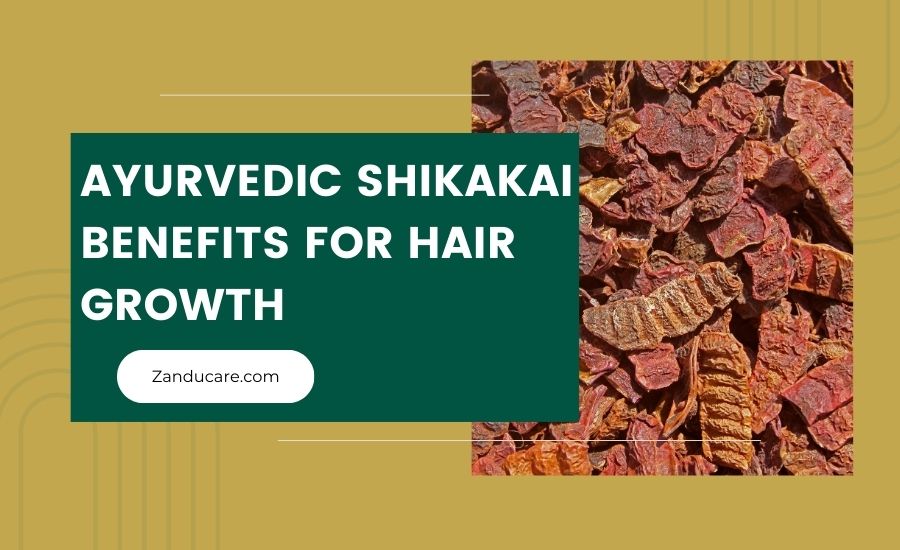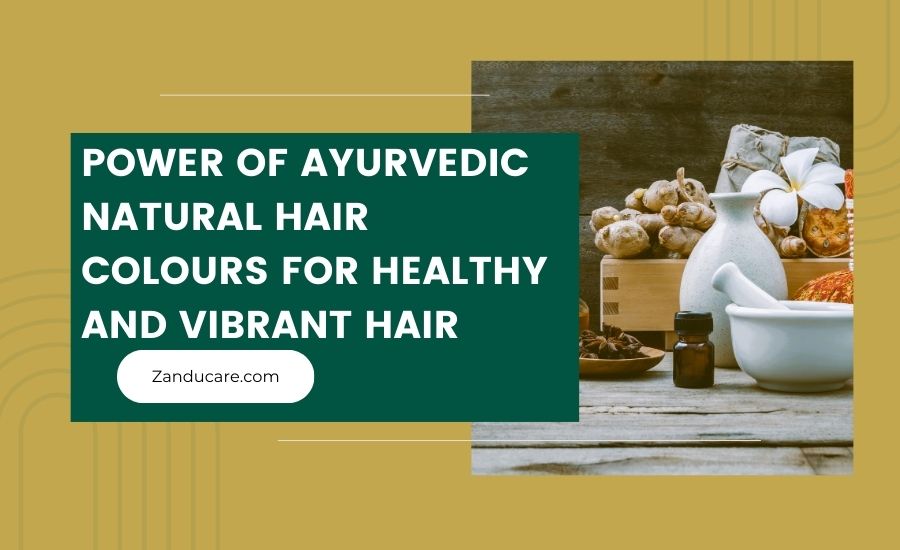
Treats Dandruff, Hair Breakage, Hair Thinning, Dull & Dry Hair | Prevents Hair Fall | Promotes Hair Growth | Improves Hair Thickness

Promotes Hair Growth | Sesame | Bhringraj | Hair Fall Control | Scientifically Proven
Many people want to have abundant and thick hair. Having good volume in our hair makes us look nice and boosts our confidence around just about everyone. However, the hair volume can decrease gradually due to genetics or hormonal imbalance, poor diet, and lifestyle habits over time.
The good news is that various Ayurvedic home remedies and modern strategies boost hair volume naturally.
So buckle down because, at the end of this article, you will know how to increase hair volume.
|
Did you know?
|
Understanding Hair Volume

Hair volume is related to the thickness and density of individual hair strands and the number of strands on the scalp. Your genetic predisposition, hormones, and lifestyle can all affect how thick or thin your hair volume is. With age, the diameter of our strands decreases, which, in turn, causes us to lose some volume.
|
Factor |
Description |
|
Hair Density |
Number of hair strands per square inch of scalp |
|
Hair Thickness |
Diameter of individual hair strands |
|
Scalp Health |
Condition of the scalp, affecting hair growth |
Ayurvedic Perspective on Increasing Hair Volume
As part of the holistic health system, Ayurveda has detailed information and approach to hair care. Ayurveda recommends keeping the three doshas (Vata, Pitta & Kapha) all balanced for the good health of your silky tresses.
Key Ayurvedic principles for Hair Volume
- Dosha balance: You should know and keep your dominant dosha(s) balanced. For example, Vata types do well with nourishing oils (e.g., almonds), Pitta types thrive on cooling herbs, and Kapha ones benefit from stimulating treatments.
- Dietary considerations: A balanced diet is essential in Ayurveda for hair growth, and it must be equipped with essential nutrients like proteins, vitamins, minerals, etc.
- Lifestyle factors: According to Ayurveda, stress management tips can help maintain healthy, thick hair. Good sleep habits and exercise can also be helpful.
|
Principle |
Description |
|
Doshas |
Balance of Vata, Pitta, and Kapha energies |
|
Diet |
Emphasis on fresh, nutrient-rich foods |
|
Lifestyle |
Regular routines, stress management, and self-care |
Ayurvedic Herbs and Oils for Hair Volume

Want to know how to increase hair volume? Ayurveda utilises multiple herbs and oils to increase your hair volume. Some of the most prominent ones are:
- Bhringraj (Eclipta alba): Known for its hair thickening, anti-hair fall, and new growth induction properties, this herb is a must!
- Amla (Emblica officinalis): It is rich in vitamin C and antioxidants. This herb helps to nourish the hair along with the scalp. Due to this, you get a better volume of hair.
- Shikakai (Acacia Concinna): This is a mild natural cleanser with multiple uses. It is important to remove any buildup and balance the production of sebum.
- Brahmi (Bacopa monnieri): This herb is renowned for its calming properties and ability to soothe. It keeps the hair healthy as it nourishes the scalp.
- Fenugreek (Trigonella Foenum-graecum): It has a very high protein and nicotinic acid content. That makes Fenugreek an excellent choice for someone who wants to stop their hair from losing volume.

|
Herb/Oil |
Benefits |
How to Use |
|
Bhringraj |
Stimulates hair growth |
Mix with coconut oil. Apply to the scalp. |
|
Amla |
Strengthens hair |
Use as oil or powder in hair masks |
|
Shikakai |
Natural cleanser |
Mix with water. Use as a shampoo. |
|
Brahmi |
Reduces hair fall |
Combine with other oils for massage. |
|
Fenugreek |
Strengthens hair shaft |
Soak seeds, grind, and apply as a mask. |
Dietary Recommendations for Hair Volume
A rich-in-nutrient diet is the key to healthy and thick hair. Proteins found in foods like eggs, fish, and legumes make up hair strand by strand. Hair growth and volume depend on important nutrients like Vitamins A, D & E and minerals including iron, zinc, and biotin.
Omega-3 fatty acids, found in avocados, nuts, and fatty fish, help prevent hair loss from dry scalps. Ayurvedic staples such as ghee, milk, and nuts can also aid in maintaining healthy hair. Eating such nutrient-rich foods every day can go a long way in offering good health and appearance to the hair!
|
Nutrient |
Foods |
Benefit |
|
|
Proteins |
Eggs, fish, legumes |
|
|
|
Vitamins |
Leafy greens, nuts, seeds |
Promote hair growth, prevent breakage |
|
|
Minerals |
Zinc, iron from meat, spinach |
|
Ayurvedic Dietary Suggestions
|
Food |
Benefits |
|
Ghee |
Nourishes hair and scalp |
|
Milk |
Provides calcium and proteins |
|
Nuts |
Rich in healthy fats and zinc |
Ayurvedic Hair Treatments and Practices
Ayurvedic hair care is not just about dietary suggestions. It also combines different remedies and techniques to feed the scalp for hair growth.
1. Scalp massage with Ayurvedic oils
Warm, Ayurvedic-infused oils help to increase circulation and deliver vital nutrients to the hair follicles with gentle, regular scalp massages. Oils that can be used in this process include Bhringraj, amla, and coconut oil.
|
Technique |
Benefits |
|
Circular motions |
Enhances blood flow |
|
Gentle kneading |
Relaxes scalp muscles |
|
Tapping |
Stimulates hair follicles |
2. Herbal Hair Masks
Find potent ayurvedic herbs like methi, shikakai & brahmi for DIY hair masks and end brittle tresses once and for all!
|
Ingredients |
Benefits |
|
Amla and Shikakai |
Cleanses and strengthens hair |
|
Fenugreek and Yogurt |
Moisturises and adds volume |
|
Aloe Vera and Neem |
Soothes scalp prevents dandruff |
3. Natural Shampoos and Cleansers
Reetha, shikakai, and other gentle cleansers are also utilised in Ayurvedic shampoo, which helps remove buildup without stripping out all its natural oils.
|
Shampoo Type |
Benefits |
|
Herbal Shampoo |
Gentle, natural cleansing |
|
Ayurvedic Shampoo |
Contains beneficial herbs |
|
Sulfate-Free |
Prevents dryness and irritation |
4. Avoiding Harmful Chemicals
Ayurveda prefers to use natural, hydro-soluble materials and disapproves of harsh chemicals that will spoil hair & scalp.
Modern Techniques to Increase Hair Volume
Ayurvedic remedies may provide a rounded approach to hair loss prevention and restoration. However, the method is slow. Some contemporary techniques and products could offer quick results in increasing your volume.
1. Volumising shampoos and conditioners
Volumising shampoos and conditioners can also help lift hair at the roots, making it appear thicker and fuller. Biotin, panthenol, and polymers are common ingredients in these products.
2. Hair volumising sprays and mousses
To lift your hair immediately, you can use volumising sprays and mousses all over the hair or at the roots. They temporarily plump the hair.
3. Blow-drying and backcombing
Blow drying with a round brush, and backcombing are methods that can achieve the desired effect of thicker, more voluminous hair. Some of the tricks are effective, but caution should be exercised so that they do not damage the hair.
4. Hair extensions and weaves
Even long-term solutions, like hair extensions or weaves, can also be implemented for style. These extensions can be a great addition to achieving your desired look, but they damage real hair if applied carelessly.
Do check our related posts:
- Ayurvedic diet chart for hair health
- Home remedies for hair fall control
- Tips to cure hair thinning
- Benefits of regularly oiling hair
- Ayurvedic hair mask
- Plant based Biotin plus powder
Comparison: Ayurvedic vs. Modern Techniques
To help you make an informed decision, here's a comparison of Ayurvedic and modern techniques for increasing hair volume:
|
Aspect |
Ayurvedic Techniques |
Modern Techniques |
|
Effectiveness |
Promotes deep-rooted hair health over time; improves scalp and follicle strength |
Provides immediate volume but may not address underlying issues; results can vary |
|
Cost |
Generally low-cost; uses readily available herbs and oils |
It can be expensive; it involves products, tools, and possibly salon visits |
|
Side Effects |
Minimal; uses natural ingredients with a low risk of allergic reactions |
Potential for chemical damage; may cause scalp irritation or dryness |
|
Ease of Use |
Requires preparation, time, and consistency; involves homemade remedies and routines |
Convenient and quick; products are pre-packaged and easy to use but require regular purchase |
|
Sustainability |
Focuses on long-term hair and scalp health; environmentally friendly |
Often includes non-biodegradable packaging, frequent use of synthetic ingredients |
|
Personalisation |
Tailored to individual dosha and body constitution, a holistic approach |
Generally, it is one-size-fits-all; it may require trial and error to find the right product |
|
Cultural Relevance |
Deeply rooted in tradition and holistic health practices |
Modern, consumer-driven, influenced by trends and marketing |
Lifestyle Changes for Better Hair Volume

Both hair thinning and loss can happen due to constant stress. Regular practices such as yoga, meditation, and deep breathing can minimise stress levels, which in turn helps with hair growth. Exercise increases blood flow to the scalp and hair follicles, which results in stronger fibres and, ideally, an increase in hair volume.
Good sleep is important for general health, and hair is no exception! Get 7-9 hours of sleep a night. To make drinking more water easy, carry a small bottle everywhere and sip throughout the day.
|
Practice |
Benefits |
|
Yoga |
Improves blood circulation |
|
Meditation |
Reduces stress levels |
|
Deep Breathing |
Enhances oxygen supply to the scalp |
Common mistakes to avoid
|
Mistake |
Consequence |
|
Over-washing |
Strips natural oils |
|
Under-washing |
This leads to buildup on the scalp |
|
Harsh Chemicals |
Causes hair damage |
|
Ignoring Scalp Health |
Results in poor hair growth |
Conclusion
Combining the wisdom of Ayurveda with modern practices, you can get that sky-high volume in your hair. Recognise the building blocks of haircare - including oils species according to one of the three doshas, followed by lifestyle changes such as meditation. Consider a holistic approach that feeds your mane inside out.
FAQs
1. How can I increase my hair volume naturally?
Wondering, ‘How to increase hair volume naturally?’ You can try Ayurvedic methods like using Bhringraj, amla, and fenugreek-infused oils for scalp massages, applying herbal hair masks, and following a balanced, nutrient-rich diet.
2. What are the best Ayurvedic herbs for hair volume?
Some of the most beneficial Ayurvedic herbs for increasing hair volume include Bhringraj, amla, shikakai, brahmi, and fenugreek.
3. How often should I wash my hair to increase volume?
Ayurveda recommends washing your hair 2-3 times weekly with natural, gentle shampoos. Overwashing can strip the hair of its natural oils and discourage volume.
4. Can diet affect my hair volume?
A balanced diet rich in proteins, vitamins, and minerals can significantly impact hair volume. Foods like eggs, fish, legumes, and leafy greens are particularly beneficial for hair health and growth.
5. Are there any side effects of using Ayurvedic hair treatments?
Ayurvedic hair treatments using natural ingredients generally have minimal side effects as long as you don't have any allergies or sensitivities to the specific herbs or oils used.
6. What are the best foods to eat for thicker hair?
Some of the best foods for promoting thicker, more voluminous hair include eggs, fatty fish, nuts, seeds, leafy greens, and foods rich in vitamins A, B, C, and E, as well as biotin and iron.
7. How do modern hair volumising products compare to natural methods?
Modern volumising products can provide instant results, but the effects may be temporary. Ayurvedic methods offer a more holistic, long-term approach to increasing hair volume but may require more time and consistency to see results.
References
- Ayurveda recommends keeping the three doshas (Vata, Pitta & Kapha) all balanced for the good health of your silky tresses. (https://www.ncbi.nlm.nih.gov.)
- Known for its hair thickening, anti-hair fall, and new growth induction properties, this herb is a must! (https://www.ncbi.nlm.nih.gov)
- This is a mild natural cleanser with multiple uses. (https://www.researchgate.net)
- Hair growth and volume are dependent upon important nutrients like Vitamins A, D & E and minerals including iron, zinc, and biotin. (https://www.ncbi.nlm.nih.gov)
- Regular practices such as yoga, meditation, and deep breathing can minimise stress levels, which in turn helps with hair growth. (https://www.ncbi.nlm.nih.gov)





